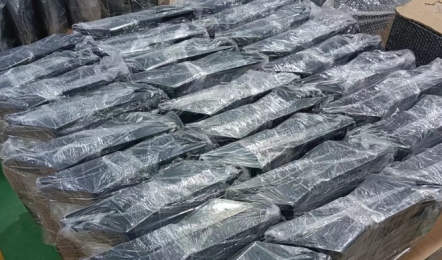Aluminum Oxide (Coloring)
Aluminum and aluminum alloys are more and more widely used because they are easy to form and lighter than other metal materials. The chemical properties of aluminum and aluminum alloy are very active, so certain protective treatment must be carried out: such as electroplating, spraying, organic protection and oxidation treatment. Oxidation treatment is the easiest to realize and the most commonly used protective treatment measure. Sheet metal parts components
The oxidation of aluminum and aluminum alloys is divided into chemical oxidation and electrochemical oxidation (commonly known as anodic oxidation). Electrochemical oxidation of aluminum and its alloys, also known as anodic oxidation, is a method to obtain corrosion resistance and decorative surface of aluminum products, which is widely used in industry. This process is like the reverse process of electroplating. The workpiece is the anode of the electrolytic circuit. Instead of adding a layer of material (metal) to the cloud on the surface of the workpiece, it carries out internal reaction to increase the thickness of the strong protective alumina layer that usually exists on the aluminum surface.
The chemical oxide film is relatively thin, soft and not wear-resistant, and its corrosion resistance is lower than that of anodic oxide film. However, it has good adsorption capacity and is mainly used as the bottom layer of painting and plastic spraying. The comprehensive performance of aluminum anodic oxide film is better than that of chemical oxide film, which is more widely used. The main characteristics are as follows:
(1) Corrosion resistance. The film thickness and sealing quality directly affect the service performance.
(2) Hardness and wear resistance. The hardness of the substrate is HV100, the common anodic oxide film can reach hv300, while the hard film can reach HV500. The hardness and wear resistance are consistent.
(3) Decorative. It not only maintains the luster and texture of metal, but also can be dyed into colorful colors.
(4) Adhesion of organic coating and electroplating layer. The effective adhesion and corrosion resistance of the coating can be improved.
(5) Electrical insulation. Aluminum is a good conductor, while oxide film is an insulating film with high resistance. The insulation breakdown voltage can reach 30 ~ 200V / um, the volume resistivity at room temperature is 109 Ω / cm3, and it can reach 1013 Ω / cm3 at 3250 ℃
(6) Transparency. The higher the purity of aluminum, the higher the transparency of oxide film.
(7) Functionality. Using the porosity of oxide film, functional particles can be deposited in micropores to obtain functional materials.
Aluminum anodizing – can produce rich and varied colors
Put the aluminum object in the appropriate electrolyte, put the metal object on the anode, and obtain a protective oxide film on the surface of aluminum through current. The chemical changes are roughly as follows:
2Al + 3 [O] → Al2O3 + energy
Aluminum oxidation process:
Alkali washing - water washing - chromic anhydride bleaching - water washing - activation - water washing - aluminum oxidation - water washing - dyeing - water washing - sealing - water washing - drying





